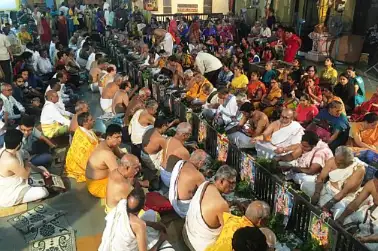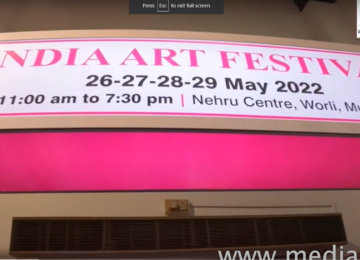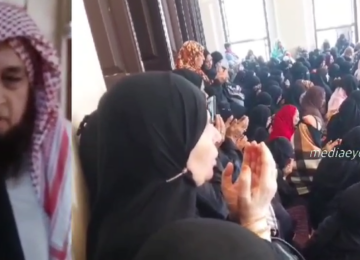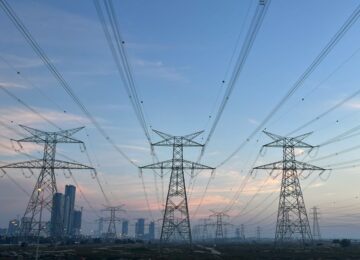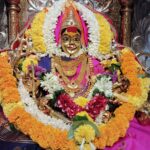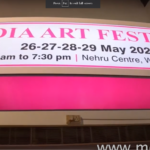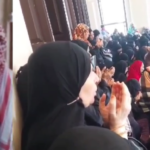K.A.Viswanathan
Mumbai: All Shiva temples across the country reverberated with the chants of “Om Namashivaya” on Maha Shivaratri. It is one of the biggest Hindu festivals celebrated with great enthusiasm. This festival was celebrated on March 4, on the new moon day in the Krishna Paksha in the month of Phalguna or Maagha according to the Hindu calendar.
Out of the 12 Shivaratris in the year, the Mahashivaratri is considered to be the most auspicious one. This year, Mahashivratri and Monday are on the same day, which is considered to be very rare. Monday is associated with Lord Shiva.

In Mumbai, devotees thronged to the nearby Shiva temples to offer pooja with milk and Bilwa leaves to Linga, a symbol for the worship of Lord Shiva. It is believed that the people who fast on this day and night and offer prayers to Lord Shiva get peace and prosperity in their life.
According to a legend, after the Earth was faced with imminent destruction, Goddess Parvati pledged with Lord Shiva to save the world. Pleased with her prayers, Lord Shiva agreed to save the world on the pretext that the people of the Earth would have to worship him with dedication and passion. From that day onwards, the night came to be known as Mahashivratri and people began worshipping Shiva with great enthusiasm.
Shiva is considered as the ideal husband and unmarried girls and women pray for a husband like him.

According to another popular legend, Maha Shivaratri is the night when Shiva performs the heavenly dance of creation, preservation and destruction.
The entire period is divided into four Yamas. All temples with Shiva Linga perform Rudra Japam and Rudra Homam during the day. The first Yama begins in the evening when Mahanyasa Rudra Japam is performed. The second Yama starts from the night and continues with the other two Yamas till early morning the next day and ends before Sunrise. During the Yama the Linga is bathed with Holy water, milk, Chandan, bhasma, coconut water, Dhahi, honey and Bel leaves with the chanting of ‘Om Namashivaya’.

The Sankara Mattham at Matunga had made elaborate arrangements. In the late evening, there was, Laksharchana with Bel leaves – with the chanting of Om Namashivaya one lakh times. Maha Deeparadhana was performed early morning after all four Yamas.
Two other temples in the vicinity Sri South Indian Bhajana Samajam and Bhuvaneswari Shiva temple also conducted poojas from the evening.
Mahashivratri is not only celebrated in India but also in Nepal and other regions where Lord Shiva is worshipped. Among the various popular shrines, Amarnath temple pilgrimage or Mount Amarnath (about 140 km from Srinagar, Jammu and Kashmir) is believed to be the holiest in Hinduism. Surrounded by fascinating mountainous terrains and picturesque snowy mountains this shrine remains crowded by pilgrims throughout the year especially on Mahashivratri.


